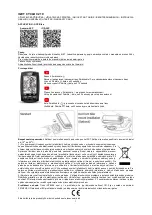
ThIs Is A
BeNT
MeTAL fORK.
ThIs Is A
COMPLeTeLy BROKeN
CARBON fORK.
fIGURe A
68
69
PART II
When all metal bikes are crashed you will usually see
some evidence of this ductility in bent, buckled or
folded metal.
It is now common for the main frame to be made
of metal and the fork of carbon fiber. See the
composites 101 section below. The relative ductility
of metals and the lack of ductility of carbon fiber
means that in a crash scenario you can expect some
bending or bucking in the metal but none in the
carbon. Below some load the carbon fork may be
intact even though the frame is damaged. Above
some load the carbon fork will be completely broken.
metal fatigue 101
Common sense tells us that nothing that is used
lasts forever. The more you use something, and the
harder you use it, and the worse the conditions you
use it in, the shorter its life.
Fatigue is the term used to describe accumulated
damage to a part caused by repeated loading. To
cause fatigue damage, the load the part receives
must be great enough. A crude, often-used example
is bending a paper clip back and forth (repeated
loading) until it breaks. This simple definition will
help you understand that fatigue has nothing to
do with time or age. A bicycle in a garage does not
fatigue. Fatigue happens only through use.
So what kind of “damage” are we talking about? On
a microscopic level, a crack forms in a highly stressed
area. As the load is repeatedly applied, the crack
grows. At some point the crack becomes visible to
the naked eye. Eventually it becomes so large that
the part is too weak to carry the same load that,
without the crack, it could carry. At that point there
can be a complete and immediate failure of the part.
One can design a part that is so strong that fatigue
life is nearly infinite. This requires a lot of material
and a lot of weight. Any structure that must be light
and strong will have a finite fatigue life. Aircraft, race
cars, motorcycles: all have parts with finite fatigue
lives. If you wanted a bicycle with an infinite fatigue
life, it would weigh far more than any bicycle sold
today. So we all make a trade-off: the wonderful,
lightweight performance we want requires that we
inspect the structure.
In most cases a fatigue crack is not a defect. It is a
sign that the part has been worn out, a sign the part
has reached the end of its useful life. When your car
tires wear down to the point that the tread bars are
contacting the road, those tires are not defective.
Those tires are worn out and the tread bar says
“time for replacement.” When a metal part shows a
fatigue crack, it is worn out. The crack says “time for
replacement.”
















































